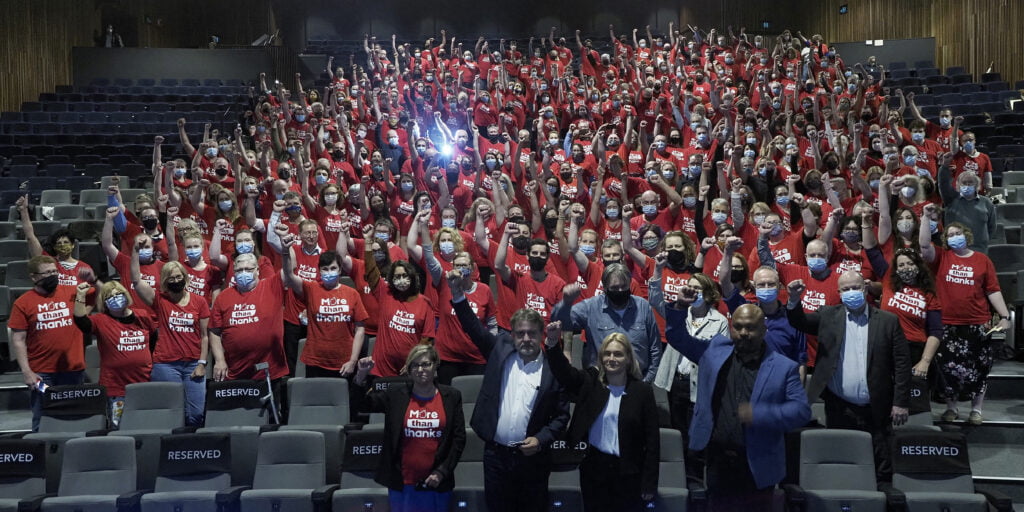Teachers in NSW have voted to strike on 7 December, demanding salary increases to address teacher shortages
The NT Government has its head in the sand over the impact of its pay freeze, writes President Jarvis Ryan
Have you visited the Teach in the Territory website lately? It’s the place where classroom teacher positions for Territory public schools are advertised.
I scan the website at least weekly as a matter of professional interest. I can’t help but notice the list of advertised jobs seems to keep getting longer. Talking to principals and senior officers within education, it seems like recruitment is becoming tougher, especially for specialist positions.
Now, sometimes it’s hard to distinguish between signal and noise. I get a lot of media queries at this time of year about what seem to be alarmingly large numbers of positions being advertised, especially principal roles.
But of course, everyone knows that turnover is a normal thing, and that many of these vacancies exist for good reasons: Someone has won a promotion; someone is going on study leave or having a baby.
But once we filter out that noise and widen our perspective, there is plenty of evidence nationally telling us to listen closely to the warning signals about looming shortages.
In May this year, NSW Department of Education figures showed there were 1148 vacancies in public schools. The problem is most acute in regional areas but is also prevalent in many pockets of Sydney.
NSW faces huge challenges in coming years to deal with teacher resignations and growing student enrolments. Modelling done for the NSW Teachers Federation projects an additional 11,000 teachers will be needed over the next decade.
The Victorian Government in 2019 allocated $45 million to address shortages outside Melbourne. Bonuses of up to $50,000 are being offered to teachers to relocate to hard-to-staff areas.
The NSW Government is worried that its supply of new teachers is drying up
Most governments are downplaying these problems for political reasons – publicly at least. Privately, they’re very worried. Confidential documents from the NSW Department from June last year state that, “If we don’t address supply gaps now, we will run out of teachers in the next five years.”
The NSW Government is worried that its supply of new teachers is drying up. The numbers of students enrolling in teaching degrees in the state plummeted by 30% over the five years from 2014-19.
Why does this all matter to the NT? Well, you don’t need to be a social sciences teacher with an undergraduate major in political economy like me to understand the basics of labour market supply and demand.
The Territory’s small size means we are almost entirely reliant on teachers trained elsewhere to staff our schools. Our remoteness means it’s always been understood that our system needs to incentivise teachers to work here with competitive salaries and other benefits.
As the national teacher supply crunch really begins to bite in coming years, the need to retain and promote these benefits will be even greater.
Some elements don’t necessarily cost government a lot, such as employing more teachers permanently. In fact, this strategy likely saves money, by promoting workforce stability.
Teacher salaries must remain nationally competitive
Our Department has belatedly realised this after a foolish seven-year dalliance with so-called school autonomy which incentivised principals to employ as many teachers as possible on short-term contracts. Thanks to continuing pressure from our union, from 2022 we will see cultural and structural change in employment practices, with greatly expanded use of permanent appointments to attract teachers.
That alone isn’t enough though. Teacher salaries must remain nationally competitive. And this is where Michael Gunner’s proposed four-year pay freeze comes in.
Such a dramatic measure would send Territory educators’ wages from near the top of the pile to the bottom.
I don’t deny that the Territory Government is fiscally strapped, or that hard decisions need to be made. But freezing the salaries of critical frontline workers like teachers will be socially and economically disastrous.
Teachers will leave in droves. It will be hard to replace them, and the quality of candidates will decline.
A scenario like this will come at great cost to our students, and to Territory society, which badly lags the nation in educational outcomes.
Has anyone in Treasury thought to model what the cost of such a scenario? Surely a lot more than agreeing to a fair pay rise.
This article was published in the semester 2, 2021 edition of the Territory Educator.

